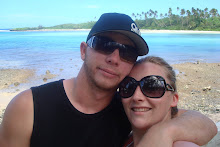The idea for my second blog came about when one of the children asked me for the camera. I willingly handed it over and they picked it up and said “say cheese” and bam! They took a photo. I was standing with my mouth open shocked at the child’s knowledge of photo taking and that with no prompting
the child’s abilities had shown through.
Some of the photos he took of me, practicing his cameraman skills.
I was completely unaware of their abilities and was sad at myself that the children had this ability and was never given the chance to use it because the camera could break, even though the camera has a chip and water proof cover and I felt that the responsibility would be good for the children to prove themselves as they are always drawing on the walls and need the extra stimulation. I let them explore and have full use of the camera while sharing and taking turns. I followed them just to make sure it was not causing a drama but I worried the whole time about the other teachers as they were very anxious about the children using the camera.
I gave the children no direction and let them take whatever photos they wanted with the camera as they had proved that they could handle the responsibility. Inside I had a little knot knowing that the other teachers were watching and judging me but I figured nothing is getting broken and no one has said that I can not let the children use the camera so I just let the children use it and watched them to make sure they were looking after it.
(Smorti, 1999) “Well-prepared teachers, who recognize the power and limitations of technology, are needed now more than ever” technology is endless and always evolving and it will be a part of the children’s lives forever so the more opportunities the children have to practice the more creative we can be and the further we can stretch the limitations of technology.
This child accomplished so much and spoke to me through the camera showing me where he had been and what he was doing. I felt that the experience even though it was really simple was extremely crucial to the child’s learning. By showing an interest I felt it was my responsibility to foster that child’s learning and allow him to engage in activities to foster that interest. In the future I will definitely provide more activities for the children to use the camera and other forms of technology and go further depending on what they want. I have access to the laminator, printer and computer where I can print the photos off and get the children involved in the whole process. Get them to upload their photos and see how they can print them off and keep them forever.
The only downside was the discouragement from other staff who were too worried that the camera would get broken and that the children were not responsible enough to manage the camera, this sadden me as I agree with (Tsantis, Bewick, & Thornton, 2003) “technology is a very important area of the early childhood curriculum alongside maths and science”, and without giving the children opportunities to grow and increase their technological skills are we preventing them from their future and being too cautious?
Reference List
Smorti, S. (1999) Technology in Early Childhood. Early Education, No.19 Autumn 1999.
Tsantis, L., Bewick, C., & Thornton, S. (2003). Examining some common myths about computers in the early years. Young Children on the Web, November 2003, 1-9.









